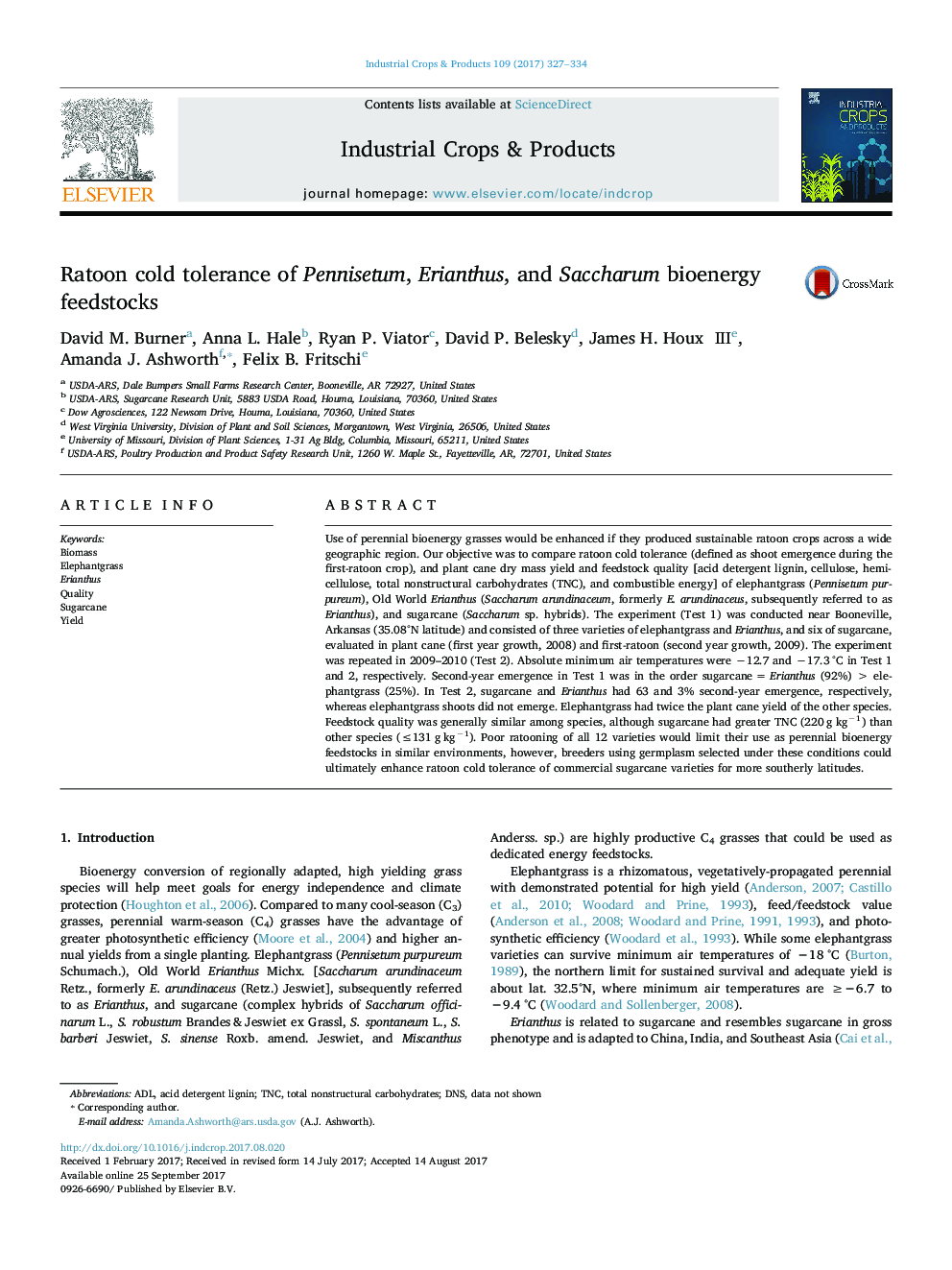| کد مقاله | کد نشریه | سال انتشار | مقاله انگلیسی | نسخه تمام متن |
|---|---|---|---|---|
| 5761745 | 1624801 | 2017 | 8 صفحه PDF | دانلود رایگان |

- Feedstock usage would be improved by increased ratooning across a geographic region.
- Researchers aimed at improving ratoon cold tolerance, yield, and feedstock quality.
- Feedstock quality was similar among species, although sugarcane had greatest TNC.
- Poor ratooning of all varieties would limit use as feedstocks in similar environments.
- Breeders could improve cold tolerance of sugarcane for more southern latitudes.
Use of perennial bioenergy grasses would be enhanced if they produced sustainable ratoon crops across a wide geographic region. Our objective was to compare ratoon cold tolerance (defined as shoot emergence during the first-ratoon crop), and plant cane dry mass yield and feedstock quality [acid detergent lignin, cellulose, hemicellulose, total nonstructural carbohydrates (TNC), and combustible energy] of elephantgrass (Pennisetum purpureum), Old World Erianthus (Saccharum arundinaceum, formerly E. arundinaceus, subsequently referred to as Erianthus), and sugarcane (Saccharum sp. hybrids). The experiment (Test 1) was conducted near Booneville, Arkansas (35.08°N latitude) and consisted of three varieties of elephantgrass and Erianthus, and six of sugarcane, evaluated in plant cane (first year growth, 2008) and first-ratoon (second year growth, 2009). The experiment was repeated in 2009-2010 (Test 2). Absolute minimum air temperatures were â12.7 and â17.3 °C in Test 1 and 2, respectively. Second-year emergence in Test 1 was in the order sugarcane = Erianthus (92%) > elephantgrass (25%). In Test 2, sugarcane and Erianthus had 63 and 3% second-year emergence, respectively, whereas elephantgrass shoots did not emerge. Elephantgrass had twice the plant cane yield of the other species. Feedstock quality was generally similar among species, although sugarcane had greater TNC (220 g kgâ1) than other species (â¤131 g kgâ1). Poor ratooning of all 12 varieties would limit their use as perennial bioenergy feedstocks in similar environments, however, breeders using germplasm selected under these conditions could ultimately enhance ratoon cold tolerance of commercial sugarcane varieties for more southerly latitudes.
Journal: Industrial Crops and Products - Volume 109, 15 December 2017, Pages 327-334